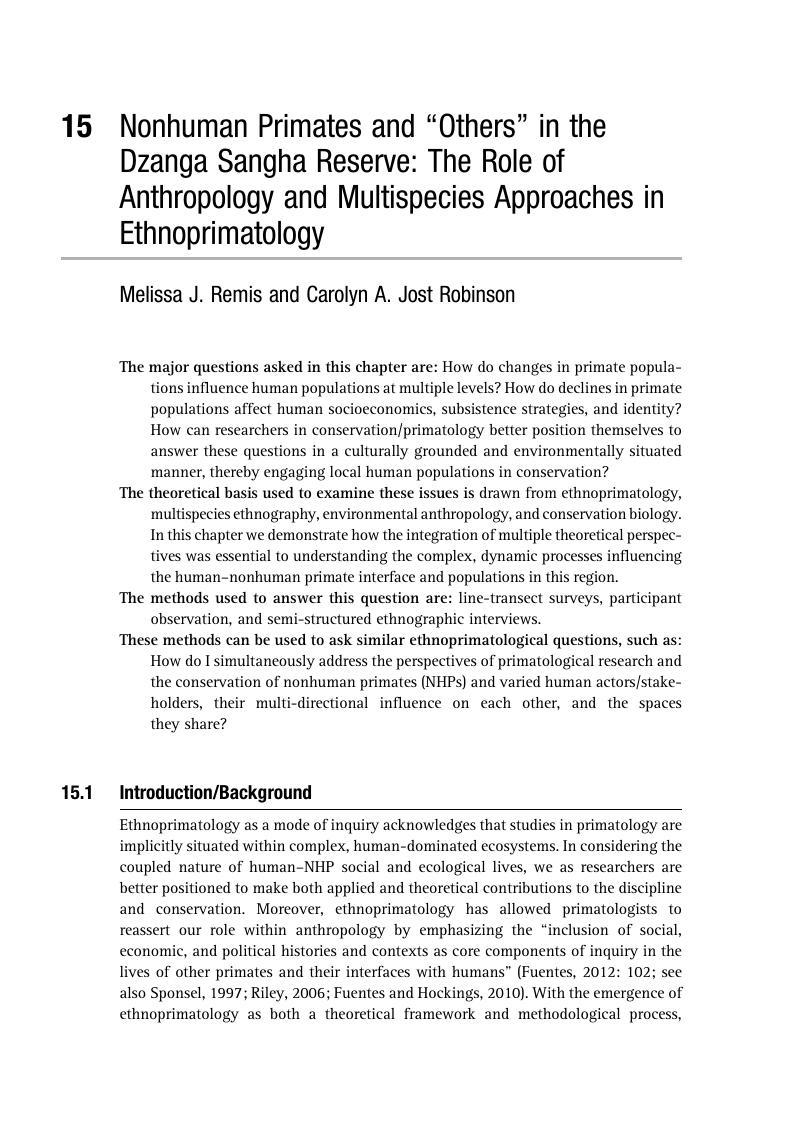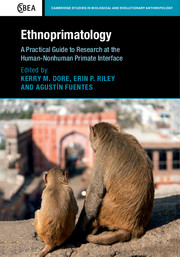Book contents
- EthnoprimatologyA Practical Guide to Research at the Human–Nonhuman Primate Interface
- Cambridge Studies in Biological and Evolutionary Anthropology
- Ethnoprimatology
- Copyright page
- Contents
- Contributors
- Methods
- 1 Introduction: Doing Ethnoprimatology in the Anthropocene
- Part I Characterizing the Interface
- Part II Following the Data: Incorporating Ethnography
- 13 Introduction to Part II
- 14 Incorporating the Ethnographic Perspective: The Value, Process, and Responsibility of Working with Human Participants
- 15 Nonhuman Primates and “Others” in the Dzanga Sangha Reserve: The Role of Anthropology and Multispecies Approaches in Ethnoprimatology
- 16 Sacred Monkeys? An Ethnographic Perspective on Macaque Sacredness in Balinese Hinduism
- 17 Navigating the Methodological Landscape: Ethnographic Data Expose the Nuances of “the Monkey Problem” in St. Kitts, West Indies
- 18 An Ethnoprimatological Approach to Assessing the Sustainability of Nonhuman Primate Subsistence Hunting of Indigenous Waiwai in the Konashen Community Owned Conservation Concession, Guyana
- Part III Implications for Conservation
- Index
- References
15 - Nonhuman Primates and “Others” in the Dzanga Sangha Reserve: The Role of Anthropology and Multispecies Approaches in Ethnoprimatology
from Part II - Following the Data: Incorporating Ethnography
Published online by Cambridge University Press: 16 February 2017
- EthnoprimatologyA Practical Guide to Research at the Human–Nonhuman Primate Interface
- Cambridge Studies in Biological and Evolutionary Anthropology
- Ethnoprimatology
- Copyright page
- Contents
- Contributors
- Methods
- 1 Introduction: Doing Ethnoprimatology in the Anthropocene
- Part I Characterizing the Interface
- Part II Following the Data: Incorporating Ethnography
- 13 Introduction to Part II
- 14 Incorporating the Ethnographic Perspective: The Value, Process, and Responsibility of Working with Human Participants
- 15 Nonhuman Primates and “Others” in the Dzanga Sangha Reserve: The Role of Anthropology and Multispecies Approaches in Ethnoprimatology
- 16 Sacred Monkeys? An Ethnographic Perspective on Macaque Sacredness in Balinese Hinduism
- 17 Navigating the Methodological Landscape: Ethnographic Data Expose the Nuances of “the Monkey Problem” in St. Kitts, West Indies
- 18 An Ethnoprimatological Approach to Assessing the Sustainability of Nonhuman Primate Subsistence Hunting of Indigenous Waiwai in the Konashen Community Owned Conservation Concession, Guyana
- Part III Implications for Conservation
- Index
- References
Summary

- Type
- Chapter
- Information
- EthnoprimatologyA Practical Guide to Research at the Human-Nonhuman Primate Interface, pp. 190 - 205Publisher: Cambridge University PressPrint publication year: 2017
References
- 11
- Cited by

